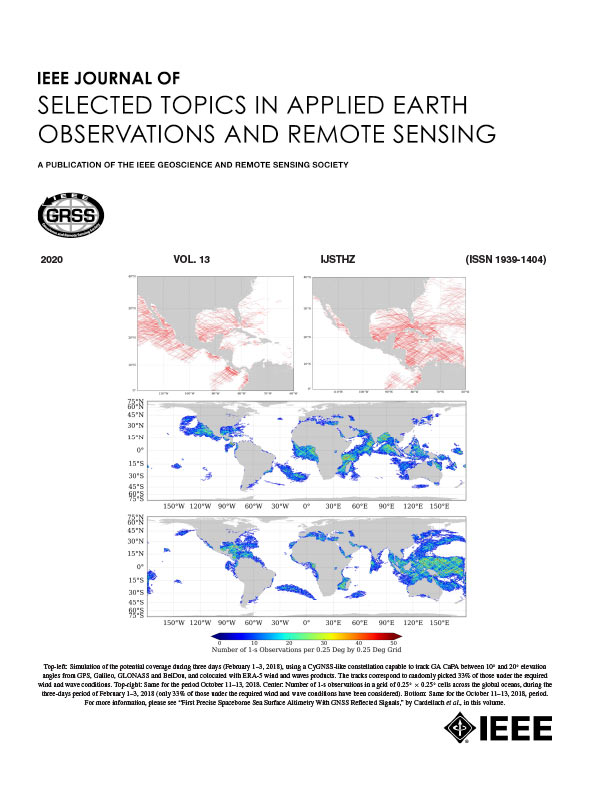A New Phase Unwrapping Method for Disconnected Regions Inspired by Continental Drift Theory
IF 4.7
2区 地球科学
Q1 ENGINEERING, ELECTRICAL & ELECTRONIC
IEEE Journal of Selected Topics in Applied Earth Observations and Remote Sensing
Pub Date : 2025-06-19
DOI:10.1109/JSTARS.2025.3581025
引用次数: 0
Abstract
Phase unwrapping (PU) is a crucial step in interferometric synthetic aperture radar, as it directly influences the accuracy of surface deformation monitoring and topographic mapping. However, PU in disconnected regions due to surrounding low-coherence pixels and irregular terrain like islands remains challenging. To address this issue, we propose an advanced PU method that enhances network construction for disconnected regions by leveraging continental drift concept and visual contour features. The method adaptively connects disconnected regions and reconstructs a spatial network, significantly increasing the number of network connections between these regions compared to the original network. Consequently, our method can optimize the unwrapping paths, enhance antinoise performance, and improve PU accuracy. The effectiveness of the proposed method is validated through both simulated and real datasets. The results demonstrate that our proposed method outperforms the classical minimum cost flow method, achieving a 37.29% reduction in phase standard deviation, and improving the accuracy of subsequent parameter estimation.受大陆漂移理论启发的非连通区域相位展开新方法
相位展开(PU)是干涉型合成孔径雷达的关键步骤,它直接影响到地表变形监测和地形测绘的精度。然而,由于周围低相干像素和不规则地形(如岛屿)的不连通区域,PU仍然具有挑战性。为了解决这个问题,我们提出了一种先进的PU方法,通过利用大陆漂移概念和视觉轮廓特征来增强断开区域的网络构建。该方法自适应连接断开的区域并重建空间网络,与原始网络相比,这些区域之间的网络连接数量显著增加。因此,我们的方法可以优化展开路径,增强抗噪性能,提高PU精度。通过仿真和实际数据集验证了该方法的有效性。结果表明,该方法优于经典的最小成本流方法,相位标准差降低了37.29%,并提高了后续参数估计的精度。
本文章由计算机程序翻译,如有差异,请以英文原文为准。
求助全文
约1分钟内获得全文
求助全文
来源期刊
CiteScore
9.30
自引率
10.90%
发文量
563
审稿时长
4.7 months
期刊介绍:
The IEEE Journal of Selected Topics in Applied Earth Observations and Remote Sensing addresses the growing field of applications in Earth observations and remote sensing, and also provides a venue for the rapidly expanding special issues that are being sponsored by the IEEE Geosciences and Remote Sensing Society. The journal draws upon the experience of the highly successful “IEEE Transactions on Geoscience and Remote Sensing” and provide a complementary medium for the wide range of topics in applied earth observations. The ‘Applications’ areas encompasses the societal benefit areas of the Global Earth Observations Systems of Systems (GEOSS) program. Through deliberations over two years, ministers from 50 countries agreed to identify nine areas where Earth observation could positively impact the quality of life and health of their respective countries. Some of these are areas not traditionally addressed in the IEEE context. These include biodiversity, health and climate. Yet it is the skill sets of IEEE members, in areas such as observations, communications, computers, signal processing, standards and ocean engineering, that form the technical underpinnings of GEOSS. Thus, the Journal attracts a broad range of interests that serves both present members in new ways and expands the IEEE visibility into new areas.

 求助内容:
求助内容: 应助结果提醒方式:
应助结果提醒方式:


